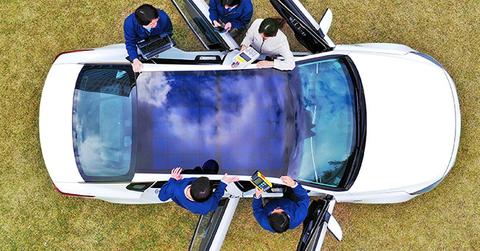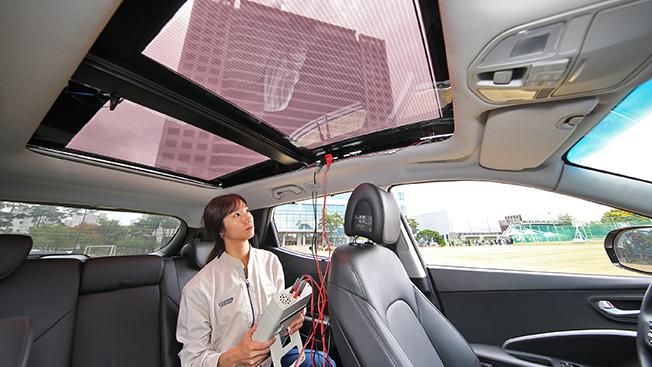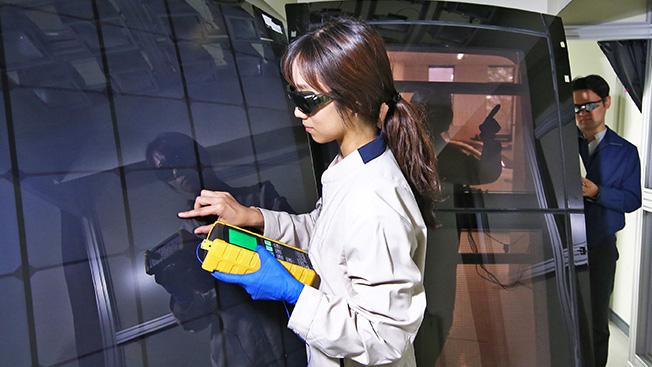If You Buy A Car In 2019, It Might Come With A Solar Roof
Hyundai Motor and Kia Motors just announced starting in 2019 select vehicles will come with a solar roof installed to help with lowering CO2 emissions and gas mileage.
Updated Nov. 8 2018, 12:57 p.m. ET

Cars aren't the most eco-friendly option for getting around but Hyundai Motor and Kia Motors are trying to change that. The two companies jointly announced that starting next year they'll begin installing electricity-generating solar panels on select vehicles, along with supporting internal combustion, hybrid and battery electric vehicles with additional electrical power.
“In the future, we expect to see many different types of electricity-generating technologies integrated into our vehicles. The solar roof is the first of these technologies, and will mean that automobiles no longer passively consume energy, but will begin to produce it actively,” said the developer of the technology Jeong-Gil Park, Executive Vice President of the Engineering and Design Division of Hyundai Motor Group.
Basically what this means is that by offering vehicles with solar panels on their rooftops, vehicles will have a supplement to the car's power system, but it won't outright replace it. With the sustainable addition, drivers will not only reduce their CO2 emissions, but also save more money on gas with improved mileage.

So how does the technology work? The solar charging system is composed of a solar panel, a controller and a battery. As the panel absorbs photons of light from the sun, it creates electron-hole pairs in silicon cells, enabling current to flow and generating electricity.
When a 100W solar panel is equipped, it can produce up to 100 Wh of energy (in ideal conditions: summer noon, 1000 W/m2 intensity of radiation). The controller features Maximum Power Point Tracking (MPPT), which controls voltage and current to increase the efficiency of electricity harvested by the solar panel. This power is converted and stored in the battery, or utilized to decrease load on the vehicle’s alternating current (AC) generator, thereby increasing vehicle range.

But this is only the beginning of how automakers hope to make their products more environmentally friendly. Hyundai Motor Group is launching its first generation of this technology into its vehicles after 2019 to help meet global regulations targets and improve vehicle fuel efficiency then they'll move onto a second generation where a semi-transparent solar roof can be applied to internal combustion engine (ICE) vehicles.
According to the company's release, the semi-transparent technologies can be integrated with a panoramic sunroof, letting light through into the cabin, whilst charging the vehicle’s battery at the same time. Applying solar charging systems to ICE vehicles will help them comply with ever more stringent global environmental laws regulating CO2 emissions.
Hyundai and Kia estimate that their first-generation solar roof tech will reach vehicles in 2019, but timelines for the second and third generation have not yet been announced.